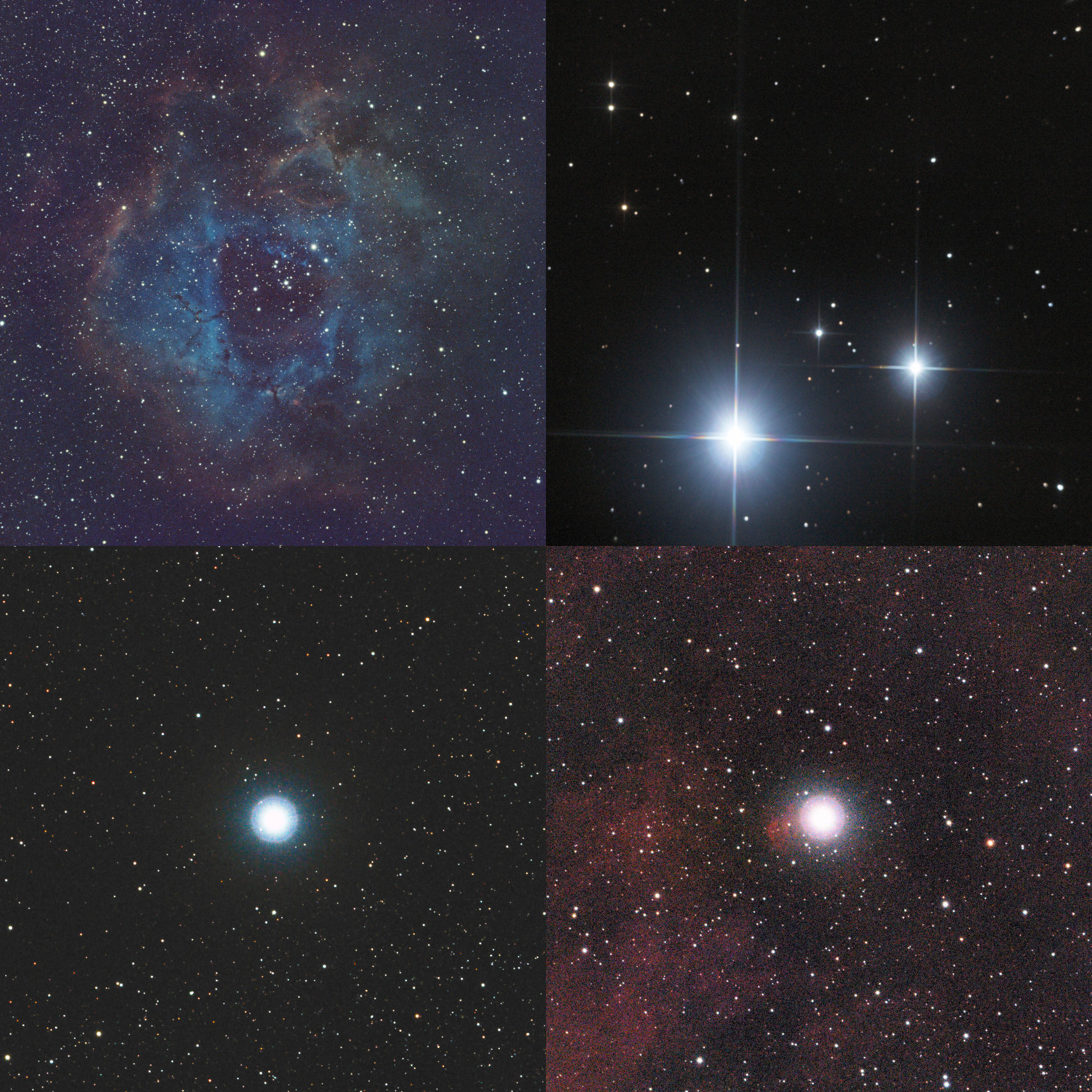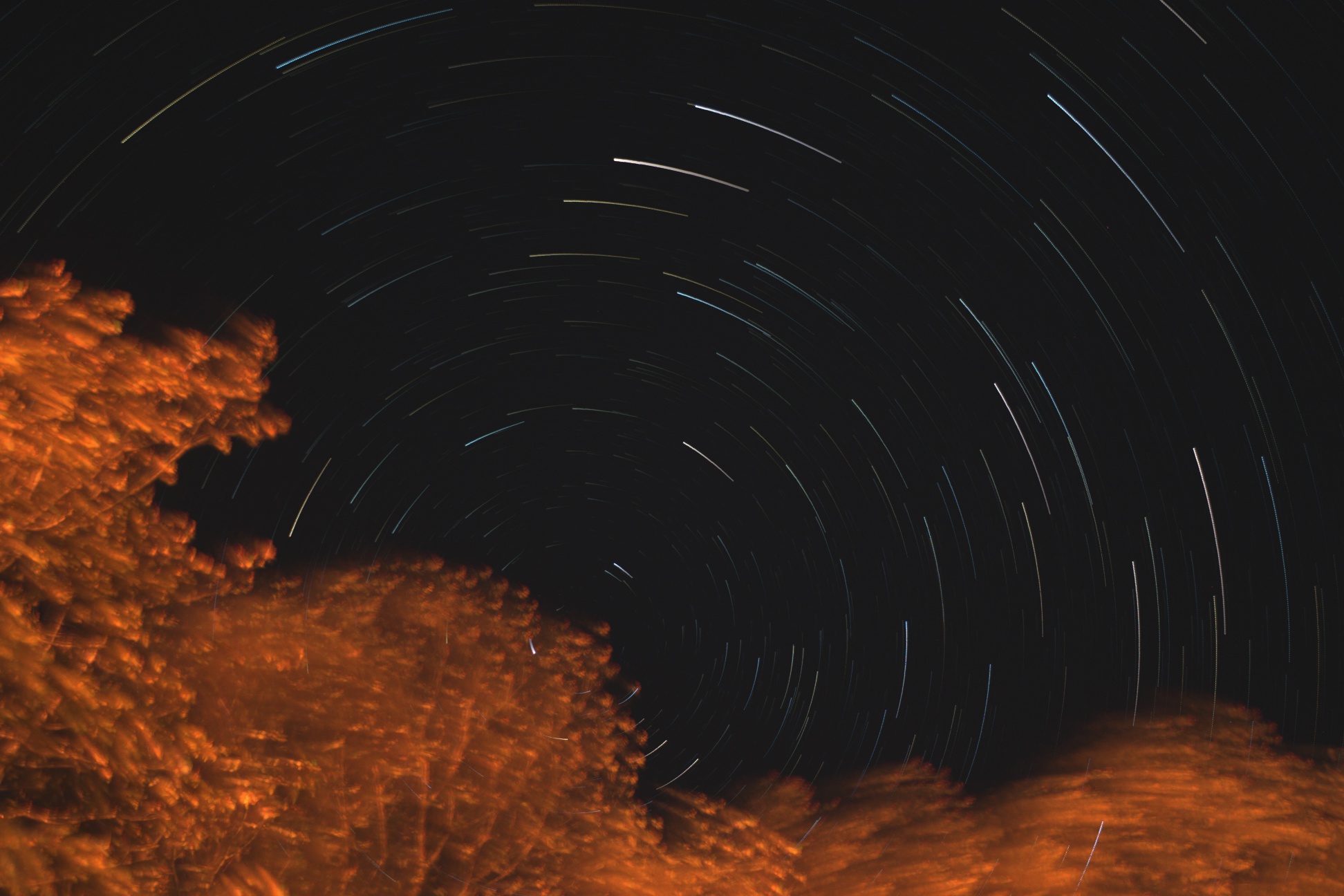„Lift up your eyes to heaven and see. Who has created these things? It is the One who brings out their army by number; He calls them all by name. Because of his vast dynamic energy and his awe-inspiring power, Not one of them is missing (…)”
Middle Eastern poem about the stars, 8th century BCE
Our recent pictures
Elephant's Trunk Nebula
IC 1396
The Elephant’s Trunk Nebula is 2,400 light-years away from us. The ionization source is the star in the bottom center, HD 206267. The “trunk” itself is an active star formation region. There is at least one young star there that is less than 100,000 years old. Unfortunately that star is out of reach for our equipment. However, two slightly older ones (1 million years) are visible in the central hole in the trunk.
Blaze Star
T Coronae Borealis
The Blaze Star is a recurring nova (not a supernova) in the constellation Corona Borealis. It also known as T Coronae Borealis or T CrB for short. A nova event is expected any day now. The star will suddenly brighten up to a similar luminosity as Polaris (North Star). The next occurance is expected in 2104.
How do we take astrophotos?
What kind of equipment is needed to take these pictures
People keep asking us if these pictures are made by us. They are. Really. This is the equipment we use.
Bubble Nebula
NGC 7635 / Sharpless 162 / Caldwell 11, NGC 7538, M52 / NGC 7654
This is an actual bubble - altough it is 7 light-years across. That is 1.5x the distance to the nearest star to us. The hot young star in the center of the bubble is shedding its outer layers (it is a Wolf-Rayet star, SAO 20575). While that mass is being blown away from the star by the stellar wind it is also excited by the intense radiation. The nearby molecular cloud is glowing for the same reason. This star is going to become a supernova in about 10-20 million years and will collapse into a black hole.
Iris Nebula
NGC 7023 / Caldwell 4
The Iris Nebula is a reflection nebula, which means it is made of dust and is illuminated by starlight (in the visible spectrum). In this case, by the bright star visible in the center. The nebula itself is very bright, just below the human eye’s perception threshold (which is about 10 photons hitting the same cell in a tenth of second). It is 6 light-years in diamater and is about 1,300 light-years away from Earth.
Pelican Nebula
IC 5070 & 5067
This beutiful star formation region is easy to find in the sky. Deneb, a magnitude 1.25 star, is just out frame (near the top left corner). The image is SHO palette (Sulphur/Hydrogen/Oxygen gas).
Articles
Blaze Star
T Coronae Borealis
The Blaze Star is a recurring nova (not a supernova) in the constellation Corona Borealis. It also known as T Coronae Borealis or T CrB for short. A nova event is expected any day now. The star will suddenly brighten up to a similar luminosity as Polaris (North Star). The next occurance is expected in 2104.
How do we take astrophotos?
What kind of equipment is needed to take these pictures
People keep asking us if these pictures are made by us. They are. Really. This is the equipment we use.
Etcetera
Assorted throwaway pancakes
More often than not astrophotos don’t come out the way you planned them to. There are about 200 steps involved in taking a picture, and they all have to be right. Also, often we need to experiment, finetune equipment or the sky is not good enough for long enough to finish a project. These are some examples of failures and experiments.
Star trails
Around the Polaris region
66 minutes of the Earth rotating around its axis.












